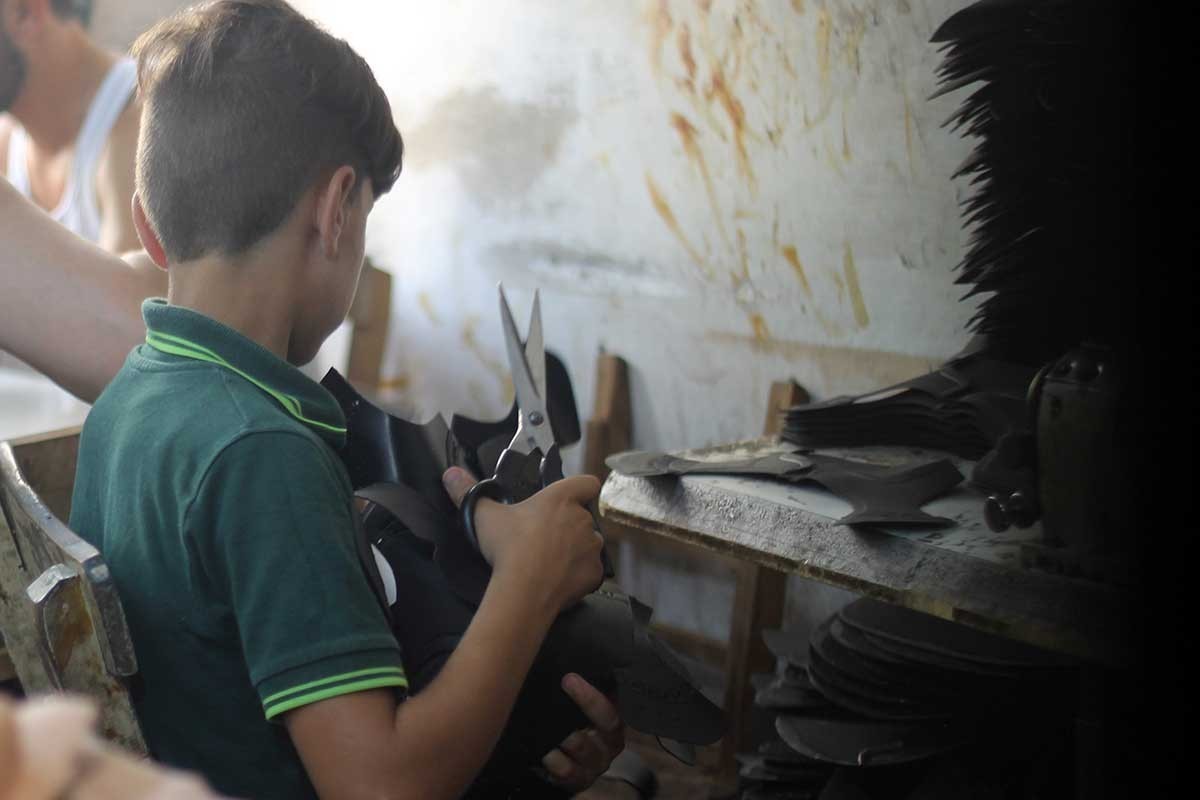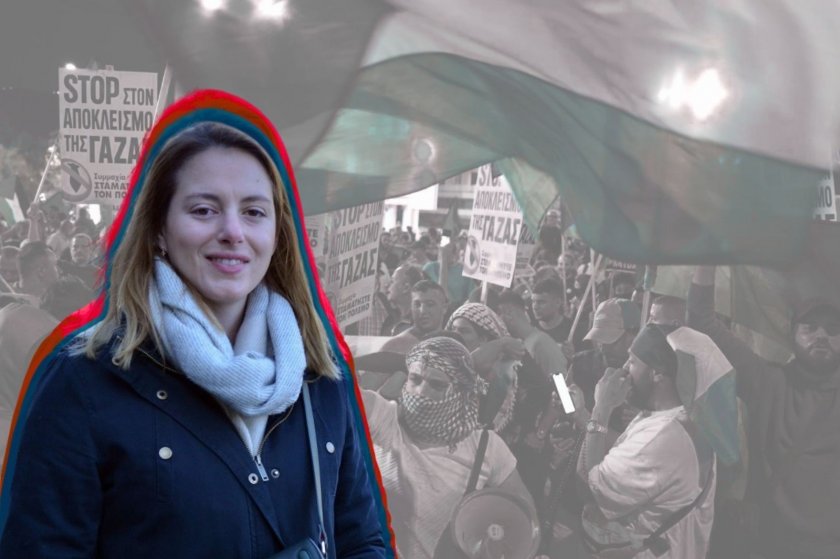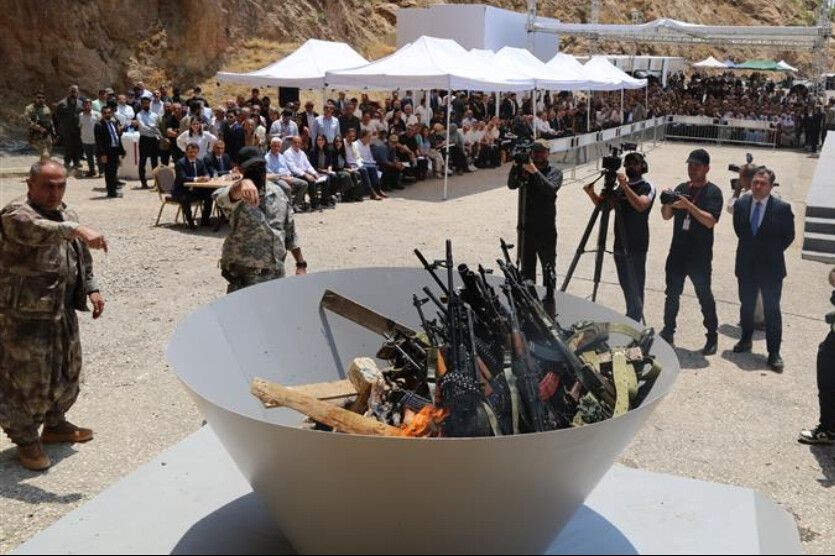67 children lost their lives in work manslaughters in 2018, in Turkey
Children’s weekly working hours and deaths are on the rise year by year and policies implemented by the government are encouraging child labour. As to the bosses, their profits multiply.

Fotoğraf: Volkan Pekal/Evrensel
Hilal TOK
Istanbul
Child labour not only prevents children living out their childhoods but exposes them to many risks in life, such as being deprived of education, health problems, developmental problems and work manslaughter. Children’s weekly working hours and deaths are on the rise year by year and policies implemented by the government are encouraging child labour. As to bosses who turn to child exploitation, their profits multiply.
This May alone, according to Workers Health and Work Safety Assembly (WHWSA) figures, of 163 workers who lost their lives in work manslaughters, nine were children. Additionally, according to the work manslaughter reports the WHWSA collates every month, of at least 696 workers who lost their lives in work manslaughters in 2019, 26 were children. There are 218 million child workers in the world. As to our country, the number of child workers had approached two million in 2018. Some two million children are also employed as cheap labour under the guise of “apprenticeship” or “vocational education.”
Even if last year was proclaimed the Year Against Child Labour, no concrete steps were taken to prevent child labour. I spoke to Education and Science Workers' Union General Chair Feray Aytekin Aydoğan and Pınar Abdal of the WHWSA about the current situation regarding child labour.
CHILDREN HAVE PAID THE PRICE FOR THE 4+4+4 SYSTEM
Education and Science Workers' Union General Chair Feray Aytekin Aydoğan, recalling that 67 children lost their lives in work manslaughters in 2018, the Year Against Child Labour, said, “One of the children who died was eight! Even if it was declared Year Against Child Labour, far from preventing child labour, legal measures were taken to make it even more widespread. Not least 4+4+4, many measures implemented have led to children drifting away from education and working as labourers.”
Pointing to the influence of the 4+4+4 system on child labour, Aydoğan commented, “The 4+4+4 education system has led to the placee-course attendee-apprentice exploitation now nearing one and a half million in number and children working in other areas. The increase in the number of child workers is both a consequence of the state’s support for the bosses and the 4+4+4 education system’s policy based on turning children into workers. Under the 4+4+4 education system, the compulsory primary education age was raised to between six and thirteen. The age at which child labour begins has been effectively reduced to thirteen at the middle school leaving age. Under the guise of apprenticeship and placement or vocational education, having been given a statutory veneer of legitimacy, these are widespread forms of employment that exploit child labour. Children undergoing apprenticeship or placement are forced to do the same work under the same conditions as adults while deprived of health and safety precautions and social security protection.”
CHILD LABOUR MEANS “A CHEAP WORKFORCE”
Stating that vocational high schools had effectively been transferred to capital, Aydoğan said, “Failing to prevent child labour is an ideological preference for ruling parties. In education, students are being brought up in line with capital’s needs.”
Aydoğan made the following proposals to truly combat child labour:
- The 4+4+4 education system and the protocols signed with capital must be ended and child labour must be prohibited.
- Every individual under eighteen is a child and cannot be employed. The right to public education, one of the state’s basic responsibilities, is an indisputable right for every child. Measures must be taken with reference to each child’s education right.
- The education/health right of refugee/migrant children, who have been deprived of basic provisions, must be guaranteed.
CHILD LABOUR IS GRADUALLY BECOMING HEAVIER AND MORE DANGEROUS
Pınar Abdal of WHWSA, pointing out that the child labour force participation rate rose to 21% in 2018, said, “Child labour is gradually moving into heavier and more dangerous jobs. Working in heavy and dangerous jobs in the street and in small and medium-sized enterprises, deemed to be among the worst forms of child labour, is becoming more frequent outside family businesses, for pay and in itinerant and transient agricultural jobs.”
Saying the stage child labour had reached needed to be appraised in conjunction with the government’s policies of integrating poor children into the labour force in line with the market’s needs, Abdal noted, “This is because placement and apprenticeship in particular are increasingly being positioned above all to meet capital’s demands with children being cheap and unskilled labour.”
Stating that poverty was the most important reason why children who should be at school and at play had to be workers, Abdal numbered inequitable income distribution among the main reasons: “Seventy per cent of child workers work because they have to support the household or contribute to the household’s income.”
CHILD LABOUR IS WHETTING THE BOSSES’ APPETITES
Pointing to the increase in adult unemployment, inadequate sources of income, the unrecorded economy, the education system and the increase in refugee/migrant labour as being among the reasons for the increase in child labour, Abdal said, “We see capital leaning far more towards child labour particularly in periods of economic crisis. Cheaper, insecure and “obedient” child labour is whetting the bosses’ appetites.”
Saying that child work manslaughters would increase further with summer work in the fields, Abdal continued, “We will witness children’s deaths for as long as no step is taken regarding work in the agricultural sector, construction and the street, forming the backbone of child labour, and it is ignored and promoted.”
CHILD WORKERS ENCOUNTER MANY RISK
Pointing to the example of season agricultural worker children, Abdal commented, “Seasonally employed children encounter many hazards such as the lack or limited availability of fresh water and toilets in nylon tents along with their families, working long hours under the sun, drowning, intense exposure to chemicals and being stung by insects.”
Stating that children who work in the street who mainly do jobs like waste collection, peddling, shoe shining and window cleaning encounter many hazards such as, on the one hand, long working hours and, on the other, suffering violence, molestation and rape, spending the night in the street, malnutrition and exposure to chemicals, Abdal said, “Likewise, children who work in the industrial sector work in jobs where the work is extreme and long, there is dangerous machinery, long working periods, dust, chemicals such as paint and varnish, heavy weights to carry, work in a noisy environment, working on their feet for a long time and in which they lose their health and security while still in their childhood and lose their lives in work manslaughters.”
“CONSCIENTIOUS” PRONOUNCEMENTS DO NOT ATONE FOR PARTNERSHIP WITH CAPITAL!
Abdal made two suggestions to prevent child labour: “First, child labour can only be prevented with a state policy that really aims to prevent it. This cannot happen with policies that on the one hand make “conscientious” pronouncements and, on the other, drive hundreds of thousands of children into becoming workers so as to meet capital’s needs. At this point, the second leg of the trivet, the struggle of those who stick up for their health and security and struggle for a humane existence and an equal world acquires meaning. There must also be struggle against the poverty, inequitable income distribution, unemployment and insecurity which force children to become workers.”
HEAR, SEE, LISTEN: THE WORKING CHILDREN’S SHRIEK IS IN ALL WORKPLACES!
The Fişek Institution has also launched a campaign to mark 12 June World Day Against Child Labour. The campaign announcement, saying, “Children are unseen, their voices are unheard and their hands are unheld in workshops, fields and building sites. The state takes no concrete steps to reduce child labour and society does not raise its voice adequately about this practice that robs the country of its future,” went on to read:
“We as the Fişek Institution Working Children’s Knowledge and Action Centre Foundation have started a campaign named “You Find the Slogan!” to mark the Day Against Child Labour. Our aim is to create social awareness of the ever-increasing child labour in our country and create a basis for jointly thinking about this problem, seeking solutions and creating social pressure that will spur official organs into action. Proposals for slogans that rival one another for excellence have been submitted to our campaign. One of the slogans we will publish in our foundations’ publication, the Working Environment Magazine, draws attention to the deep silence on this issue despite the widespread nature of child labour: ‘Hear, See, Listen: the Working Children’s Shriek is in All Workplaces!’
We convey our thanks to all who support our campaign and call on them to hear the children’s silent shriek and to come hand in hand and struggle together to eliminate the disgrace to humanity of child labour.”
People are also urged to make contact at the address “https://fisek.org.tr/bize-katilin/” to finally participate in the struggle against child labour heralded in the campaign announcement.
(Translated by Tim Drayton)
Forwarding to the next article...
10 seconds remaining





Follow Evrensel